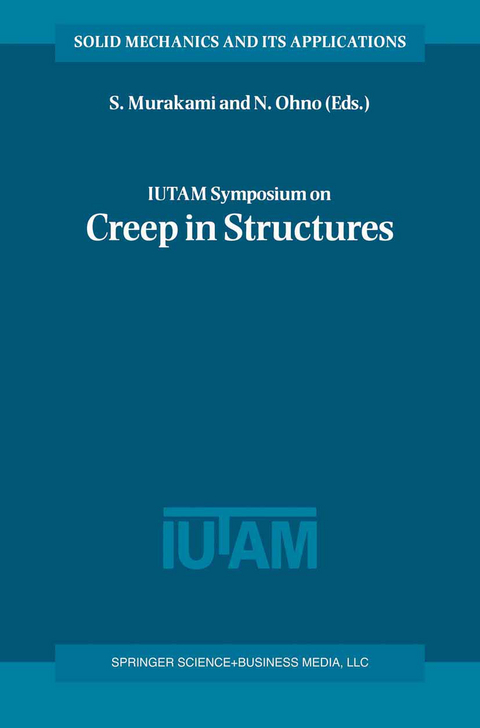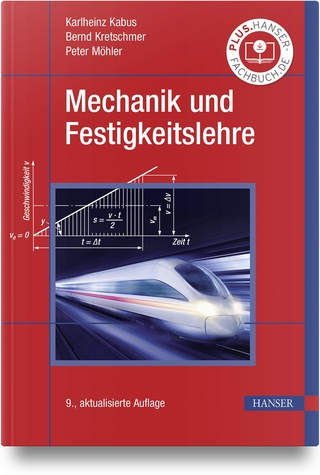
IUTAM Symposium on Creep in Structures
Springer (Verlag)
978-0-7923-6737-6 (ISBN)
An opening address; D.R. Hayhurst. Micromechanism-quantification for creep constitutive equations; B.F. Dyson, M. MCLean. Creep of gamma-TiA1 based alloys: experiments, computational modelling; W.T. Marketz, et al. Anisotropic creep of single crystal superalloys; D.M. Knowles, D.W. MacLachlan. A rate dependent formulation for void growth in single crystal materials; E.P. Busso, et al. Microstructural modeling of creep fracture in polycrystalline materials; P. Onck, et al. Creep crack growth: from discrete to continuum damage modelling; B.-N. Nguyen, et al. Prediction of inner cracking behavior in heat-resistant steel under creep-fatigue condition by means of three-dimensional numerical simulation; N. Tada, R. Ohtani. Creep of welded structures; T.H. Hyde, W. Sun. Two parameter characterization of crack tip fields under creep conditions; A.D. Bettinson, N.P. O'Dowd, et al. Cavity growth induced by electric current and stress in LSI conductor; T. Kitamura, T. Shibutani. Dislocation density simulations for bulk single crystal growth process using dislocation kinetics model; N. Miyazaki. Multiaxial creep fatigue under anisothermal conditions; J.P. Sermage, et al. Constitutive modeling of viscoplastic damage in solder materials; Y. Wei, et al. Consideration of stress state influences in the material modeling of creep, damage; H. Altenbach. Strain, stress, damage fields in damaged, cracked solids; A. Benallal, L. Siad. Effects of damage on the asymptotic fields of a model I creep crack in steady-state growth; S. Murakami, et al. Computational continuum damage mechanics: its use in the prediction of creep in structures: past, present, future; D.R. Hayhurst. Cracking of creeping structures described by means of CDM; A. Bodnar, M.Chrzanowski. A coupled formulation for thermo-viscoplasticity at finite strains: application to hot metal forming; L. Adam, J.P. Ponthot. Thick axisymmetric plate subjected to thermo-mechanical damage; A. Ganczarski. Creep of shotcrete tunnel shells; Ch. Hellmich, et al. Rupture life time prediction, deformation mechanisms during creep of single-crystal nickel-base superalloys; A. Epishin, et al. Creep damage assessment, void formation in engineering materials; H.C. Furtado, I. Le May. Creep damage accumulation, and failure in narrow regions of steel welds; D.J. Smith, et al. Long-term creep life prediction based on understanding of creep deformation behavior of ferritic heat resistant steels; K. Yagi, et al. Near-threshold fatigue 1 crack growth in SUS304 steel at elevated temperatures; S. Kubo, et al. Approximate viscoplastic notch analysis; G.Härkegard, H.-J. Huth. The reference stress method in creep design: a thirty year retrospective; J.T. Boyle, R. Seshadri. Study on creep-fatigue life prediction methods based on long-term creep-fatigue tests for austenitic stainless steel; Y. Takahashi. Developments in creep fracture assessments within the R5 procedures; R.A. Ainsworth, et al. On global approaches to some problems involving plasticity, viscosity effects; K. Dang Van. On the simulation of large viscoplastic structures under anisothermal cyclic loadings; L. Verger, et al. Description of inelastic behavior of perforated plates based on effective stress concept; T. Igari, et al. The overstress model applied to normal, pathological behavior of some engineering alloys; E. Krempl, K. Ho. Creep strain uncertainties associated with testpiece extensometer ridges: their identification, reduction; D.R. Hayhurst, et al. Equivalence of back stress
| Erscheint lt. Verlag | 31.12.2000 |
|---|---|
| Reihe/Serie | Solid Mechanics and Its Applications ; 86 |
| Zusatzinfo | XXII, 522 p. |
| Verlagsort | Dordrecht |
| Sprache | englisch |
| Maße | 155 x 233 mm |
| Themenwelt | Naturwissenschaften ► Physik / Astronomie ► Mechanik |
| Technik ► Maschinenbau | |
| ISBN-10 | 0-7923-6737-5 / 0792367375 |
| ISBN-13 | 978-0-7923-6737-6 / 9780792367376 |
| Zustand | Neuware |
| Haben Sie eine Frage zum Produkt? |
aus dem Bereich


